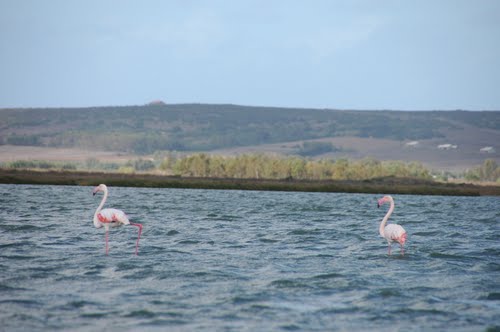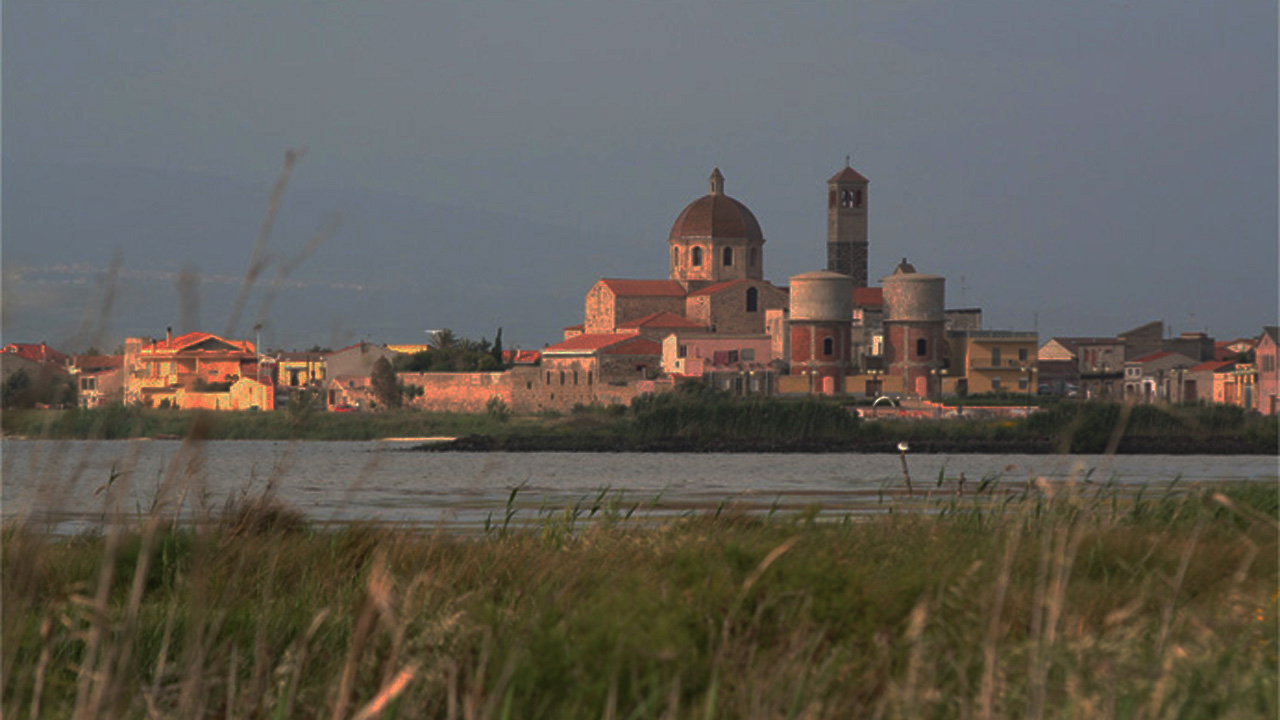
Cabras Pond
This post is also available in:
 Italiano (Italian)
Italiano (Italian)
Cabras pond lies north of the Gulf of Oristano, in the Sinis Peninsula, and is acknowledged as a wetland environment of international importance, along with the adjoining Mistras (a body of water between the Sinis Plain and the flatland around the gulf of Oristano), Pauli ‘e Sali, and the pond of Sale Porcus. The origin of those areas was due to the appearance of sandy strips isolating stretches of the sea over time, with subsequent accumulation of debris and sediments from the rivers.
FAUNA
This pond is about 5.436 acre-wide, is one of the richest marsh ecosystems in the Mediterranean and still plays a fundamental role in the local daily life. Traditional fishing activities, for instance, have always been a vital asset for the locals who live around the pond.
Depending on the salinity gradient of the pond, there are many different kinds of fish.
In the northern waters, there are common carp (Cyprinus carpio), mosquitofish (Gambusia affinis) and tenches (Tinca tinca), all brought here by man, as it also happened with black bullheads (Ameiurus melas).
In the saltier waters (very profitable for the local fishermen), there are flathead grey mullets (Mugil cephalus), thinlip mullets (Liza ramada), thicklip grey mullets (Chelon labrosus), common mullet (Liza), and leaping mullets (Liza saliens). There are also European basses (Dicentrarchus labrax), European eels (Anguilla anguilla), gilt-head breams (Sparus auratus), and other species.
This area is also favoured by many species of birds looking for a good wintering shelter and an undisturbed breeding area. There are many waterfowl species, such as red-crested pochards (and endangered species), pink flamingos, and cormorants. On the cliffs of the coast, blue rock thrushes, peregrine falcons, and yellow-legged gulls usually nest and reproduce.
Among the reeds, it is possible to observe Western swamphens, moorhens, marsh harriers (Circus aeruginosus), Eurasian coots (Fulica atra), and little grebes (Tachybaptus ruficollis).
FLORA
Around Cabras Pond, there are mostly herbaceous species, distributed according to the salinity gradient of the water. Where the water is less salty for long spells of time, there is a lot of common reed (Phragmites australis); on the other hand, cattail (Typha angustifolia and Typha latifolia) usually grows where the roots remain underwater, while sago pondweed (Potamogeton pectinatus) and duckweed (Lemna minor and Lemna gibba) can be found between the pond and the draininig ditches. There is also sea clubrush ( Bolboschoenus maritimus ), which was used for covering huts, cordgrass (Spartina versicolor Fabre), and sea purslane (Halimione portulacoides). Many rare and endemic species include the Limonium genera, while other typical wetland species include Ruppia drepanénsis “tineo”, and Hydrocotyle ranunculoides.
This post is also available in:
 Italiano (Italian)
Italiano (Italian)


